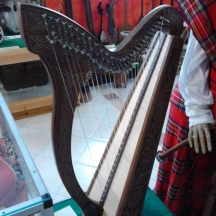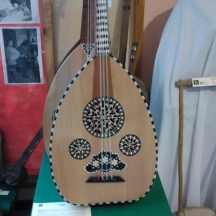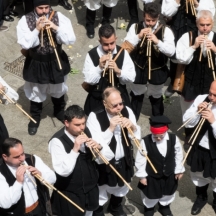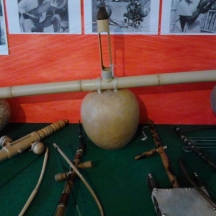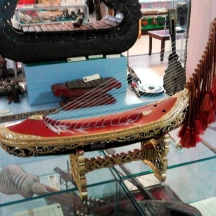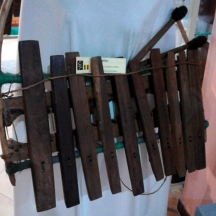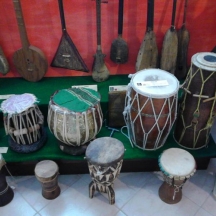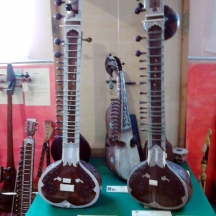Sonus de su mundu: music can be safeguarded in a museum of international instruments
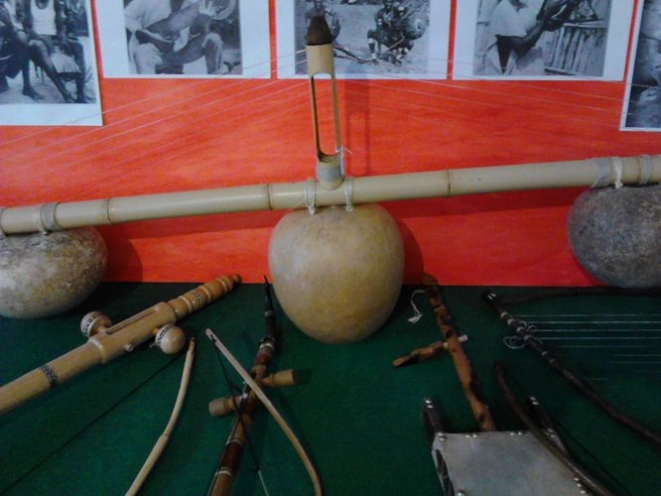
From an adolescence passion for the musical instruments in general to a love more specific and detailed for numerous samples come from all over the world. So, the Antonio Ghiani’s idea was born for instituting the Museum Sonus de su mundu, in Assemini, in the Province of Cagliari. Thirty years ago, his dedication for launeddas led him towards the field of popular instruments that are typical of other Countries. Comparing the instrument that represents Sardinia, he had the will to know the place where those instruments were elaborated and realized.
Once, musical instruments were divided according to the material with which they were built – for instance woodwinds, brass instruments, etc. Then, they were identifying for kind, through the system Hornbostel-Sachs, according to which they are divided in five families, making a connection with the method of production of the sound: Membranophones – the sound is produced by the vibration of a tense membrane; Aerophones: they emit the sound through an inner tube that vibrates into the instrument; Ropephones: they produce the sound through the vibrations produced by the ropes that belong to them and that can be beaten (piano), plucked (harp), rubbed (violin) or they can be made vibrate thanks to the wind; Idiophones: the sound is produced by the vibration of the structure of the instrument itself; Elettrophones: the sound is caused through the electricity.
Into the Museum there are these different kinds and their arrangement is studied in a perfect way: as soon as the visitor comes in, he is astonished for the multitude of the samples that are present. Then, he pays specific attention to the right side, where there are the instruments typical of Sardinia, among which that more representative stands out: launeddas. A clear choice in the arrangement of these things, by now considered artworks with an undisputed prestige. The beginning is represented by the instruments come from the Island, to which those foreign are personalized and resembled, for replaying the same music. Su tumbarinu de sa cointrozza, su triangulu, sa matracca, su tumbarinu cun criccos, sa matracca ‘e arroda, su sulittu e tamburinu – this one was used for emitting the announcement and for keeping the rhythm and it is still used in Spain and Argentina.
Carrying on the visit, you can note instruments that come from Africa: Cameroon, Morocco, Tunisia, Egypt, Ethiopia, Kenya, Republic of Guinea, Mali, Senegal; from America, above all that of South, as Bolivia, Chile, Ecuador e Peru; from Europe: Bulgaria, Greece, Germany, Hungary, Russia, and from other East Countries, from Mongolia, from Far East, China, Tibet, Vietnam, Cambodia, Siam, India. This one offers instruments typical of its classic music, too. The instruments and the Countries represented in the collection are a lot.
More than seven hundred things among instruments and sound things compose this unusual and detailed museum. A heritage that varies for function, aesthetics, peculiarity, origin and age. Indeed, in some situations there are the previous things and the respective successors. Sitar, tablas, sarangi, balalaike, charango, gong, ranat-ek – a sample of xylophone – sizilianu, scoccorredda de taba are the most common and well-known. But there are others that are singular because were born from common things, that become phonic instruments.
Artworks never seen and able to emit a rather pleasing sound can emerge from pumpkins, coconuts, animals’stomach, animals’skin. Musical instruments come from Nature, for instance, creating, for some, a game of ropes built through animals’stomach or vegetable fibers. The art of making do, using that Nature offers. There are instruments that duplicate the hairstyle of the tribe to which they belong; other that duplicate images of domestic life; other that duplicate animals’head, for example horses.
Thanks to lots of them, you can recognise that mouth and chest are the amplifiers, too, as it happens when the musical arch is played by mouth and it accompanies who sings. The kùndi from Congo, the entongoli from Uganda, the bamboo tube vhaliha from Madagascar, the rebab from Iraq, the kamanjha from Egypt, the kabak from Turkey, the ribab kamanjha from Morocco, the tubri from India, the zummara from Egypt, the alboka from Spain, the suroz from Pakistan, the arghul from Egypt, the gender from Indonesia, the masenqo from Ethiopia, the kemance from Turkey, the tampura from India, the shamisen from Japan.
The morin khuur is the instrument that represents Mongolia. It is an inlaid instrument and on the top there is the duplicate of a horse’s head. The material used is the wood and the ropes are made by horsehair. It represents the violin of Mongolia and it is difficult to find. The sarinda from India is another type of violin and the sample that is shown into the Museum is more than century old. There is the rebab from Afghanistan, too, built through an only piece of mulberry; the sheep’s or goat’s skin works as harmonious base; the marquetries are made by bone and mother-of-pearl.
Such a museum has an inestimable value and its magnificence is such that it spread all over the world. Everything safeguarded into the museum is a bearer of distinctiveness and quality. A museum born from the common and natural things, but, paradoxically out of the ordinary. Its greater peculiarity is that it underlines as from nothing can emerge something and from unexpected things can be created a wonderful sound.
Sonus de su mundu
Collection-Exhibition of musical instruments
Assemini (CA)
Via Ischia, 3 – Loc. Piri Piri
Visit by booking for groups and pupils:
Antonio Ghiani
Mobile phone 328.1191366
Email: antonio.ghi@tiscali.it
